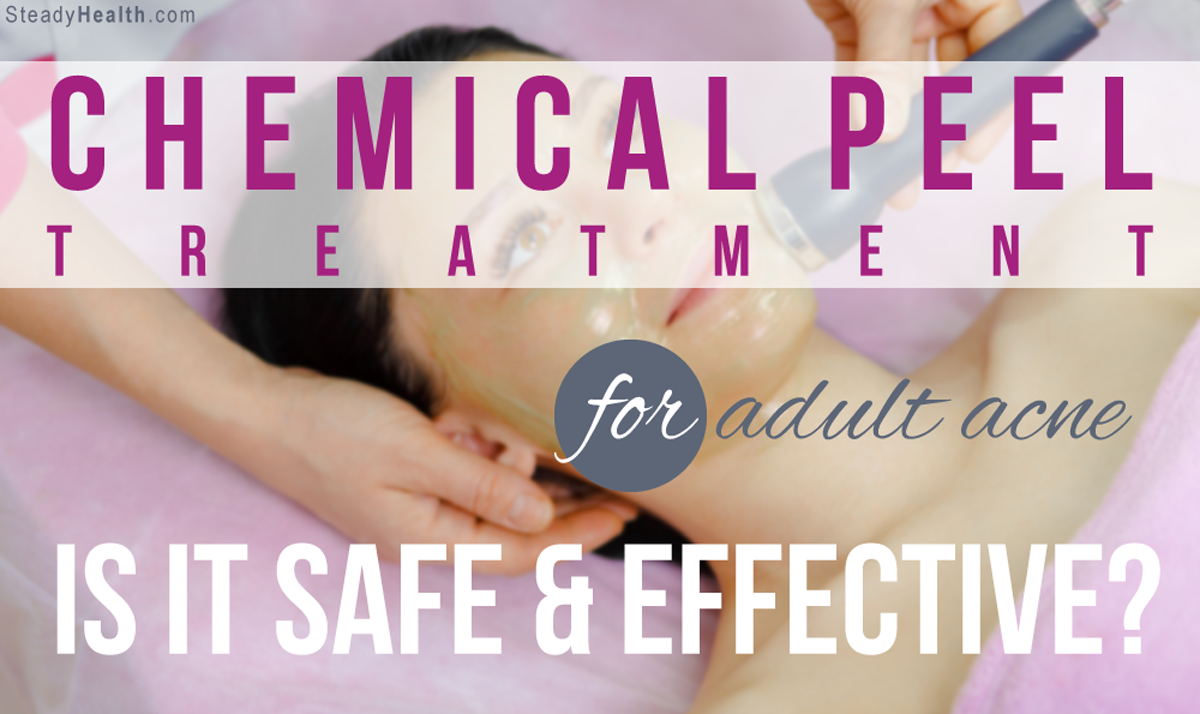The advances in dermatology have resulted in various treatment options for adult acne. Mild acne sufferers usually try home remedies and natural solutions. However, moderate and severe acne sufferers should see a dermatologist because only a dermatologist can guide you best about which adult acne treatment you should go for.
Different kind of adult acne treatments range from medical to surgical. The medications that can help treat adult acne include both topical and oral drugs. These drugs include antibiotics, hormonal medicines, and retinoids. Chemical peels, laser treatments, light treatments, and microdermabrasion are the surgical options. [1]
The benefit of surgical options is that they not only help treat acne, but reduce pigmentation and scarring too. This is why people want to opt for these techniques and sometimes use a combination of mild medical and surgical options [2].
Surgical treatment is performed by a registered and certified dermatologist who holds treatment sessions at the clinic. Your dermatologist will decide how many sessions you need, keeping your skin condition and requirements in view. [3] The sessions are usually done once a week or fortnightly.

What Is Chemical Peeling?
Chemical peeling is a technique which utilizes chemicals, usually mild acids, to remove the outermost layer of your skin. These chemicals, when applied to your skin, peel a very thin layer off your skin, exposing the fresh skin below. The outermost layer of the skin is called the epidermis. The process of peeling removes all dead and damaged skin cells. [4]
Types Of Chemical Peels
The chemical solutions used for chemical peels include salicylic acid, glycolic acid, Jessner’s solution, trichloroacetic acid, lactic acid, and phenol. [5]
While the strength of chemical peels varies, the most commonly used concentrations between 10 percent and 30 percent, but the concentration of chemical peels can go up to 70 percent.
Choosing The Right Chemical Peel
Your dermatologist chooses the chemical solution which is best suited for your skin.
How Do Chemical Peels Work?
The process of chemical peeling involves cleaning the skin of all impurities and sterilizing, followed by application of the peel. Your dermatologist makes sure that the chemical solution covers all areas of skin. After waiting for a fixed time, which varies depending on the kind of peel you are undergoing, the dermatologist neutralizes the solution.
Effectiveness For Acne
Chemical peeling is turning out to be an effective solution for adult acne. Research shows that there are visible positive results. Long-term acne reduction is reported after the use of chemical peels. [7]
Chemical peels offer a less time consuming and safe option for acne treatment. They are also cheaper than the other new techniques like lasers. Chemical peels are an especially good option for people who have compliance issues with medical treatment. They offer other benefits as well.
Effect On Post Inflammatory Hyperpigmentation (PIH)
Chemical peels not only treat acne but fade away post-inflammatory hyperpigmentation (PIH) as well. Post-inflammatory hyperpigmentation occurs after a pimple is treated or healed. [8]
The peeling of epidermis lightens the pigmentation and fades away marks quickly.
Effect On Atrophic Scars
Atrophic scars are the ones which are formed because of atrophy of skin due to acne and have a sunken or pitted appearance. These scars pose a serious cosmetic issue. Chemical peeling offers an effective solution for atrophic scars as well. Regular peeling sessions fade these scars away. [9]
Rejuvenation Of The Skin
Peeling also rejuvenates your skin because of the fact that it removes a layer of dead cells, revealing soft, smooth, and glowing skin below. It removes fine lines and treats photo-damaged skin. This means that people who choose to have chemical peels to treat their adult acne will receive the benefit of younger skin as well.
Are Chemical Peels Safe?
Chemical peeling is a safe and effective treatment when performed by a professional. To ensure the safety of the peeling procedure, your dermatologist follows a set of guidelines. These guidelines are about appropriate chemical peel selection, solution concentration decision, pre-treatment, timing, neutralization process, and post-treatment. [10]
Potential Side Effects
These side effects include burning, scarring, post-inflammatory hyperpigmentation (PIH), allergic reactions, improper healing, and exacerbation of your disease or condition. You should always consult a certified professional for the process of chemical peeling to avoid any potential side effects. [11]
- Photo courtesy of SteadyHealth.com


Your thoughts on this